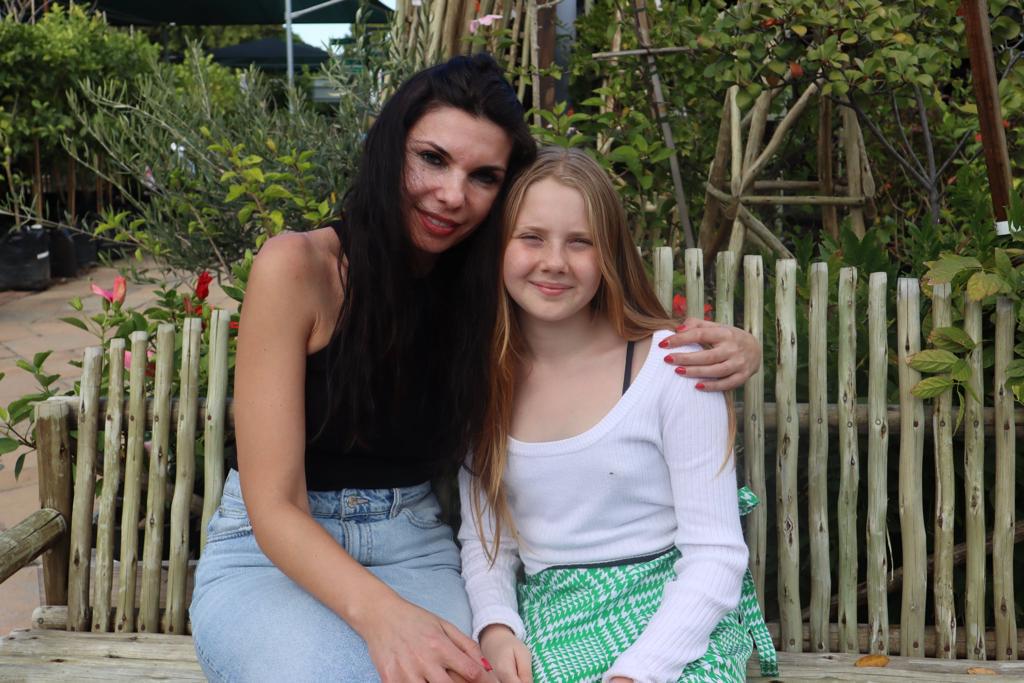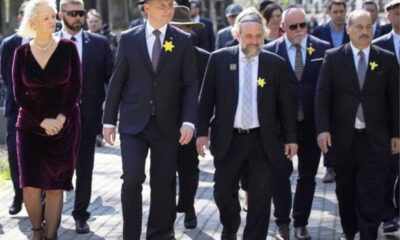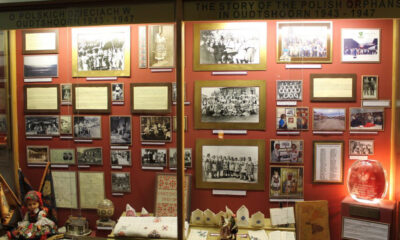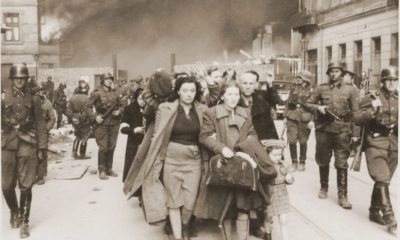
Banner

SA family meets miracle donor who saved daughter’s life
Published
1 year agoon
A woman in Poland and a young Capetonian girl are unlikely to have anything in common. But Rachel Ancer and Magda Lewandowska are “a match made in heaven” in the true sense of the phrase – they are genetic twins. That would have meant nothing if Lewandowska hadn’t made the fortuitous decision to sign up as a bone marrow donor on a whim, coming to Rachel’s rescue at the eleventh hour.
Now, Lewandowska has travelled to South Africa to meet Rachel, instantly forming a bond that speaks to their incredible story of heartbreak, hope, and the power of each person to have an impact.
“Rachel was five when she was diagnosed with a very rare bone marrow failure condition called Pure Red Cell Aplasia,” says Rachel’s father, Jonathan Ancer. “Three years later, at the age of eight, she had a life-saving bone marrow transplant (BMT). On 14 March 2017, the day of the transplant, Rachel and Magda became inextricably linked. On 1 April 2023, Magda travelled from Poland to South Africa, and the two met for the first time.”
Meeting Magda in person was the culmination of a journey that began at the end of a road. That point was the desperation that Rachel’s family felt as she became more and more ill. “While we were waiting [for a donor], we heard Michael Bublé’s song, Just Haven’t Met You Yet,” remembers Jonathan. “We somehow felt the song was about Rachel and her donor: ‘I might have to wait // I’ll never give up // I guess it’s half timing // And the other half’s luck // Wherever you are // Whenever it’s right // You’ll come out of nowhere and into my life.’”
And as it turned out, those words came true, thousands of miles away in Gdynia, a city on the Baltic Sea. That’s where Lewandowska (then 35) and her good friend, Karolina Denc, met for a weekly ritual of gym and dinner. After gym on 5 November 2016, Denc wanted to make a detour because DKMS, an international organisation that recruits bone marrow donors, was holding a donor drive.
Denc didn’t want to pressure Lewandowska to join, but at the very last moment, Lewandowska decided to register, and chose to be an international donor. A recipient often needs a stranger with their exact type of bone marrow tissue, but with thousands of tissue types, finding that match is a one in 100 000 chance.
Meanwhile, in another coastal city, on the tip of Africa, Rachel was getting sicker by the minute. “The illness had caused her bone marrow to go on strike and not make red blood cells,” says Jonathan. “Towards the end of 2015, Rachel’s doctor, Dr Marc Hendricks, told us that Rachel had become transfusion dependent and needed a BMT.
“That was when the South African Bone Marrow Registry [SABMR] and Terry Schlaphoff, who at the time was the registry’s deputy director, became involved. Every morning, Terry rushed to see if one of the international registries had produced a new donor overnight that was a match for Rachel. Weeks turned into months.”
And then, “Terry arrived at work on the morning of 23 December 2016 – the SABMR’s last day before closing for the year – and just like every morning, the first thing she did was to look to see if a donor for Rachel had joined the registry. Bingo! There was a match. Terry described it as a ‘moment of magic’. I think it was a Chanukah miracle. Terry grabbed it, and reserved the donor for Rachel.”
At 15:00 on 14 March 2017, Lewandowska’s stem cells were infused into Rachel and successfully rebooted Rachel’s faulty bone marrow.
Rachel, who is now a healthy 14-year-old, says, “It was a dream come true to meet Magda, and she will always be a part of my life. We share the same DNA after all. I honestly don’t know how to thank her enough. As we spent time together and we got to know each other, the bond was obvious. We discovered we had a lot in common.”
The Ancer family and Lewandowska found each other by chance a year after Rachel’s transplant. “There are strict protocols for when donors and patients can meet each other. At the time, SABMR didn’t reveal a donor’s identity to a patient for five years,” says Jonathan.
“All we had been told was that the donor was from Poland, and all Magda was told was that she was a donor for a girl in South Africa. We had, through the SABMR, sent Magda a letter on Rachel’s first re-birthday [the first anniversary of her BMT]. The SABMR made sure there were no identifying details, and then sent the letter.
“Magda received the letter, and went to the SABMR’s Facebook page and did some cyber sleuthing. She saw [Jonathan’s wife] Jean thanking the SABMR for finding a donor. She then found our Facebook page, ‘Rachel’s Circle of Love’. She went through the posts, and stumbled on a copy of the letter we had sent to her. After a few days, she posted a heart under a photograph of Rachel. I saw the heart, and saw that it was from a Polish person, and I just knew that this was Rachel’s donor. And we connected.”
Since then, they have been getting to know each other. “We had been planning to meet Magda, but then the COVID-19 pandemic spoiled that. We then decided that Rachel’s sixth re-birthday [sixth year post-transplant] was the perfect opportunity,” says Jonathan.
They spent about two weeks together. “We wanted to get to know her, for her to meet our families and friends, to share some of our life with her, and to show her how much we appreciate her,” says Jonathan. “We hosted a tea which was a double celebration: to mark Rachel’s sixth re-birthday and to thank the incredible Dr Marc, Terry and, of course, Magda.”
Looking back, Jonathan says, “When we discovered Rachel had a life-threatening illness, we went through many years of hell. I sometimes forget how dark, bleak, scary, and lonely it was. A couple of things that we did that maybe would be useful to others going through challenges were: Jean and I knew that we had to rely on each other. Many couples don’t survive such trauma, but we knew we had to get through it together. We also joined Rare Diseases South Africa, and were supported by others battling uncommon medical conditions. And we trusted Rachel’s doctors at the Red Cross Children’s Hospital – especially Dr Marc, who walked with us on our journey.”
Jonathan is a copy editor at a news website “and the news cycle often feels like the place where hope goes to die”, he says. “But when I think of the remarkable people who have made Rachel’s recovery possible, my sense of hope in the world is restored.”
The Ancers hope to visit Lewandowska in Poland, and have discovered that Jonathan’s grandfather, Chaim Ancer, came from a village in Poland just 30km from Magda’s grandmother’s village.
“My grandparents left Poland in the 1920s to escape antisemitism,” says Jonathan. “A friend, Brenda Stern, sent this poignant message which has stayed with me: ‘There’s something deeply profound, almost sacred, about Magda’s life giving Rachel her life. It’s extraordinary that out of Poland, a country whose Jewish population was almost totally annihilated in the Holocaust, came this gift of life for the great-granddaughter of Polish Jews.’”










